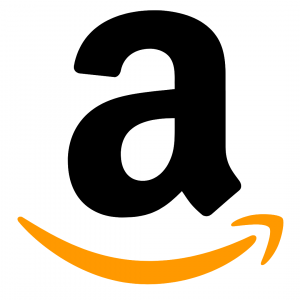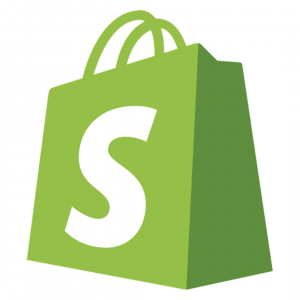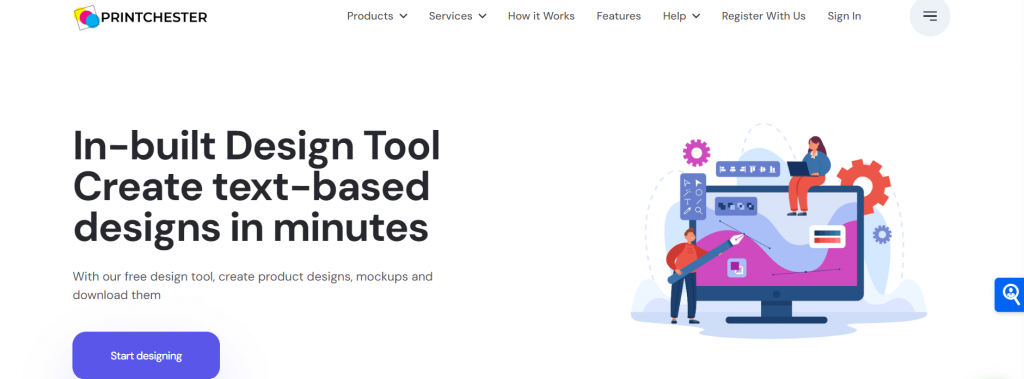Start Your Print on Demand Business: A Beginner’s Step-by-Step Guide

In today’s digital age, the opportunities for entrepreneurs are limitless. Print on demand for beginners can transform your unique designs into a wide array of products—from t-shirts and hoodies. Whether you’re an artist, a graphic designer, or someone with a passion for creativity, POD offers a low-risk, high-reward avenue to start your business.
Being in the business for 5+ years and having strong technical and e-commerce knowledge, we will help you start your print-on-demand business with the right steps.
Is Print on Demand Good for Beginners?
Yes, the print-on-demand business model is excellent for beginners. It requires minimal initial investment, has virtually unlimited scalability, and offers a global reach. The risk is low since the print provider handles materials, equipment, and workforce, allowing you to focus on design and marketing. This makes it an ideal entry point for those new to e-commerce.

9 Reasons Print on Demand is Good for Beginners
1. Low Barrier to Entry
Starting a print on demand (POD) business requires no specialized skills or prior experience in manufacturing or retail. The ease of entry allows anyone with creative ideas and a desire to start a business to get started quickly. All you need is a computer, internet connection, and a creative idea to begin your POD journey.
2. Easy Setup
Numerous POD platforms, such as Printchester, offer intuitive interfaces and comprehensive guides to help you set up your store in no time. These platforms often integrate seamlessly with major e-commerce sites like Shopify, Etsy, and Amazon, streamlining the process of getting your products online and making it easy for you to manage your store from a single dashboard.
3. No Inventory Management
Managing inventory can be daunting and costly. POD eliminates the need for warehousing and stock management, as products are created on demand. This not only saves time but also reduces the risk of unsold inventory and associated costs. You never have to worry about running out of stock or dealing with excess inventory.
4. Minimal Upfront Costs
With POD, you don’t need to invest in inventory, production equipment, or storage facilities. Products are printed only when an order is placed, significantly reducing the initial financial outlay. This allows you to allocate funds towards marketing, product development, and other areas that can directly contribute to the growth of your business.
5. Automatic Order Fulfillment
Once an order is placed, the POD provider handles the fulfillment process, from printing to packaging and shipping. This automation allows you to focus on other aspects of your business, like marketing, customer service, and product design, without worrying about the logistics of order fulfillment. The seamless process ensures that your customers receive their orders promptly and accurately.
6. Wide Product Variety

POD offers a vast range of customizable products, from apparel and accessories to home decor and stationery. This variety enables you to experiment with different product lines and cater to diverse customer preferences, helping you find the most profitable niche. Whether you want to sell t-shirts, mugs, phone cases, or wall art, POD platforms provide numerous options to diversify your product offerings.
7. Uncapped Scalability Potential
As your business grows, POD scales with you. There’s no need to worry about increasing production capacity or managing a larger inventory. The POD model allows you to handle a growing number of orders effortlessly, making it easy to scale your business. Whether you’re receiving a few orders a week or hundreds per day, the POD provider manages the workload, allowing you to expand your business without operational constraints.
8. Global Reach
POD platforms typically have fulfillment centers worldwide, allowing you to reach a global customer base. This international presence means you can sell products to customers worldwide, expanding your market and increasing your sales potential. By leveraging global fulfillment networks, you can offer competitive shipping rates and faster delivery times, enhancing customer satisfaction.
9. Lower Shipping Costs
Many POD providers have multiple production facilities strategically located around the globe. This distribution network often results in lower shipping costs and quick delivery times for your customers, boosting their shopping experience and boosting customer satisfaction. Lower shipping costs can also make your products more attractive to potential buyers, increasing your competitive edge in the market.
7 Steps for Beginners to Build a Successful Print-on-Demand Business
We’ve established that the print-on-demand (POD) model is exceptionally well-suited for beginners. Now, let’s cover the steps you must take to succeed in e-commerce.
1. Choose a Print-on-Demand Service
Selecting a reputable print-on-demand provider is crucial, as it directly impacts your product quality and brand reputation. A reliable POD provider ensures high-quality printing, timely shipping, and excellent customer service, encouraging repeat business.
To find the best provider, start with thorough research:
- Read Online Reviews and Testimonials: Understand other users’ experiences to gauge the reliability of potential POD partners.
- Order Samples: Personally assess the material quality, print clarity, and delivery efficiency.
- Evaluate Product Range and Customization: Look for providers that offer a variety of products, customization options, and seamless integration with popular e-commerce platforms like Shopify and marketplaces.
Making an informed choice about your POD provider will lay a strong foundation for your business.
2. Audience Research
Before designing products, it’s crucial to identify your target audience. Knowing who you want to sell to helps ensure your efforts are directed towards a specific niche, increasing the relevance and appeal of the products.

Here are some tips for conducting effective audience research:
- Competitor Analysis
Study successful competitors to understand their target audiences and popular products. This can provide valuable insights into market trends and help you identify potential opportunities.
- Online Communities
Participate in forums or groups related to your niche. Observing discussions in these communities can reveal potential customers’ passions and interests, offering guidance on what they value most.
- Keyword Research
Use SEO tools to uncover trending searches within your niche. This will help you identify popular and emerging trends and align your product designs with current demands.
Having a well-defined audience makes creating designs that resonate with your shoppers easier, increasing the likelihood of purchases. Once you clearly understand your target market, you can move on to the next step in building your print-on-demand business.
3. Online Store Building
Creating an online store is a crucial step in setting up a successful print-on-demand business. The first important decision is selecting the right e-commerce platform or marketplace. You can explore various options and learn more about each on Printchester’s integrations page.
The main distinction between these options lies in their functionality: marketplaces function like large online shopping malls, while platforms provide the tools to build your own standalone online store.
Choosing the Right Platform
When deciding where to establish your online business, consider the differences in store layout and customization options:

- Marketplaces (e.g., Amazon, eBay): These platforms offer limited customization, allowing for basic branding but not a unique storefront. However, they provide the advantage of built-in traffic, which means you benefit from a steady flow of customers without the need to drive traffic from search engines or social media. This can be particularly beneficial for new businesses still building their online presence.

- E-commerce Platforms (e.g., Shopify, Wix): These platforms offer extensive tools for creating a distinctive online presence, giving you creative freedom in design and layout. This allows you to build a unique and personalized store that aligns with your brand identity.
Regardless of the selling medium, as an on-demand store owner, you should:
- Define Your Brand Establish a clear and consistent brand identity that resonates with your target audience. Your brand should reflect your values and appeal to your niche market.

2. Choose Products That Appeal to Your Audience Select items that meet your market’s needs and preferences, considering current trends and timeless demands. Offering products that your audience desires increases the likelihood of sales.
3. Craft Good Product Descriptions and Photos Create compelling product descriptions and use high-quality images to attract and convert potential buyers. Detailed and visually appealing listings help customers make informed purchasing decisions.
4. Optimize for Mobile Devices Ensure your store is mobile-friendly, as the majority of e-commerce sales in recent years have come from mobile devices. A responsive design enhances the shopping experience for mobile users and can boost your sales.
Once your store is set up and optimized, it’s time to add your products and start selling.
4. Product Design
Your product selection is limited to what your print-on-demand (POD) provider offers, so it’s crucial to choose a partner with a wide range of options. With Printchester, you can customize and sell over 100 products, including fashionable garments, home decor, tech accessories, and more.
Selecting On-Demand Products
There are two main strategies for selecting on-demand products:
- Evergreen Trending Products: Design timeless, popular items like custom t-shirts and hoodies that consistently appeal to customers.
2. Seasonal and Trending Products: Identify products that align with current trends and seasonal demand to attract specific customer interests.
Designing Your Products
Most POD companies, including Printchester, offer free, user-friendly tools that allow you to create beautiful designs without any prior design experience. For instance, Printchester’s Design Tool enables users to create custom designs and mockups effortlessly.

To keep costs low, opt for POD companies that provide free design tools. This way, you won’t incur additional expenses for creating designs.
Where to Get Design Ideas
- Social Media Platforms like Instagram, Pinterest, and TikTok are excellent for spotting current trends and understanding what’s popular with different demographics. One of the main advantages of the POD model is the ability to quickly react to trends and incorporate them into your product line.
2. Design Websites, such as Behance, showcase the work of professional designers and artists. Browsing these sites can provide a wealth of creative ideas and expose you to various design styles and concepts.
3. Seasonal Events Consider designing products for e-commerce holidays and seasonal events. Some holidays may cater to niche markets, while others have mass appeal. Identify which events resonate with your audience and incorporate them into your marketing strategy.
5. Marketing Strategy
A marketing strategy is your comprehensive plan that outlines all your marketing goals and the actions needed to achieve them. It acts as your roadmap, ensuring that your efforts are aligned with your objectives.

💡Recommended Read: 15 Print on Demand Marketing Tips: Strategies to Succeed
Within your marketing strategy, you should:
- Define Your Target Market: Understand who your ideal customers are.
- Set Long-Term Marketing Goals: Establish clear, achievable goals for your marketing efforts.
- Determine Your Business’s Main Value: Identify your business’s unique value to customers.
As an e-commerce novice, deciding where to focus your initial efforts is crucial. Social media marketing is an excellent starting point. 2023 social commerce sales were estimated at nearly $64.9 billion and are projected to double in the next five years.
Effective social media tactics include:
- Organizing Contests and Giveaways: Engage your audience with clear objectives.
- Repurposing User-Generated Content: Use customer-created content as social proof.
- Using Interactive Features: Leverage stories, polls, and other interactive elements.
- Creating Educational Content: Share how-to guides and educational posts.
6. Search Engine Optimization (SEO)
Optimizing your store is essential for standing out and reaching new markets. SEO (Search Engine Optimization) is a key part of this process. General SEO best practices for print-on-demand businesses include:
- Using Keywords: Incorporate relevant keywords into your product titles and descriptions.
- Optimizing Image Sizes: Ensure your images are appropriately sized for faster loading times.
- Simplifying URL Structures: Use clear, simple URLs for better search engine indexing.
For more detailed information on SEO best practices for your chosen marketplace or platform, visit our blog and conduct your own research online.
7. Email Marketing
Email marketing offers new business owners a cost-effective, direct, and personalized way to reach and retain customers. Its measurable results aid in strategic decision-making.
Key Reasons to Implement Email Marketing
- Return on Investment (ROI)
Email marketing is renowned for its impressive ROI. On average, every $1 spent on email marketing yields a return of $36. This high ROI makes it an attractive strategy for new businesses looking to maximize their marketing budget.
2. Customer Engagement
Email allows for direct communication with your audience. Unlike social media, where algorithms can limit visibility, emails land directly in your customers’ inboxes, ensuring your message is seen.
3. Personalization Opportunities
Email marketing platforms offer advanced personalization options, enabling you to tailor content based on individual preferences, behaviors, and purchase history. This personalized approach can significantly enhance customer experience and loyalty.
4. Customer Retention
Regularly sending updates, offers, and valuable content through emails helps keep your brand top of mind for customers, making it an effective tool for customer retention.
5. Measurable Results
Email marketing provides measurable metrics such as open rates, click-through rates, and conversion rates. These insights are invaluable for fine-tuning your strategies to achieve better results.
To build your email list, offer incentives such as discounts or exclusive content for sign-ups. Use engaging pop-ups on your website and promote your newsletter on social media to attract subscribers.
Time to Get Started
Launching a print-on-demand store may seem daunting initially, but starting is the hardest part, as with many things in life. Equipped with this knowledge, you can confidently take the first steps, knowing that the initial hurdles are often the highest.
Best of luck, and we’d love to hear about your experiences in the comments below.
